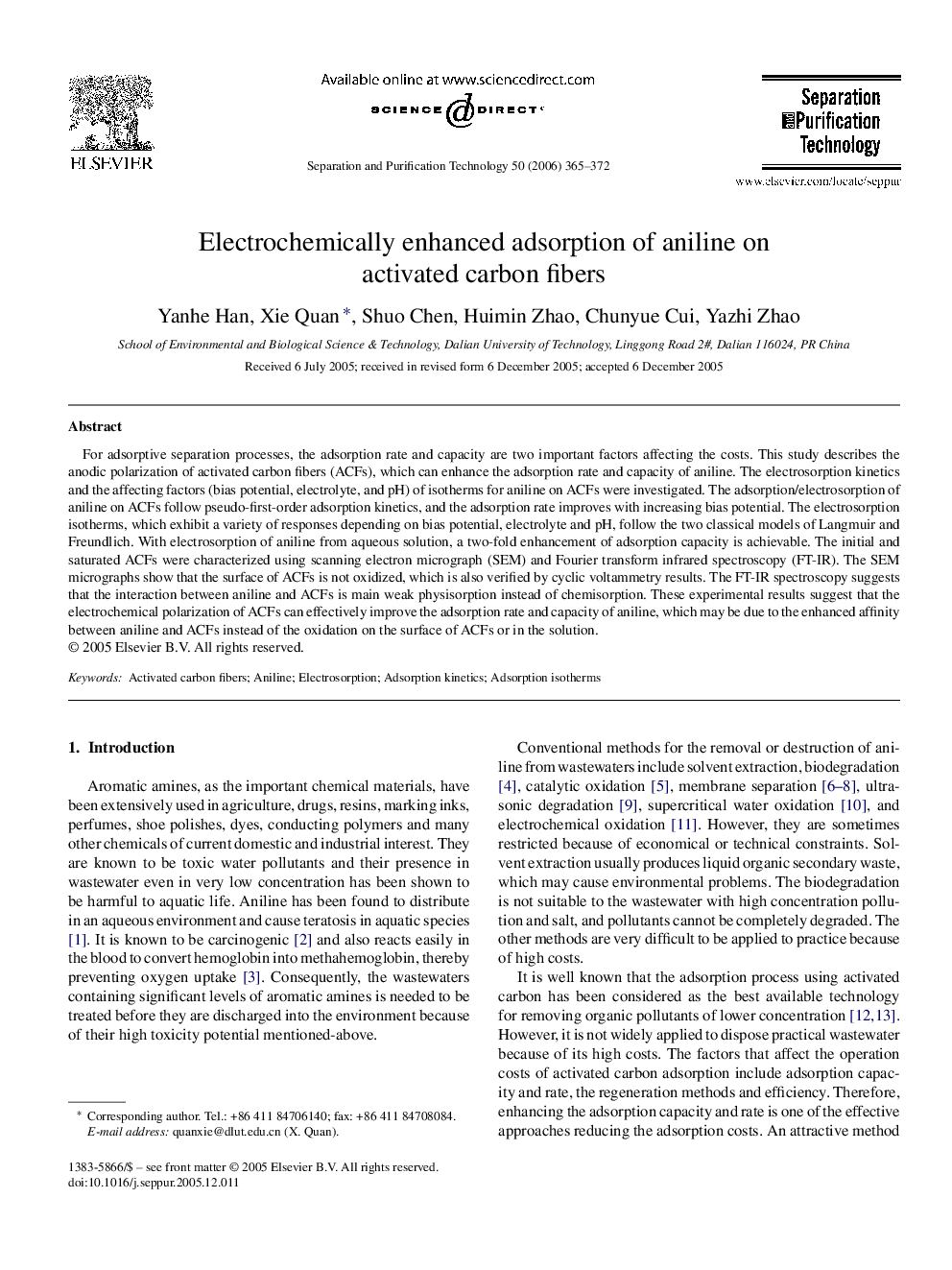| Article ID | Journal | Published Year | Pages | File Type |
|---|---|---|---|---|
| 643661 | Separation and Purification Technology | 2006 | 8 Pages |
For adsorptive separation processes, the adsorption rate and capacity are two important factors affecting the costs. This study describes the anodic polarization of activated carbon fibers (ACFs), which can enhance the adsorption rate and capacity of aniline. The electrosorption kinetics and the affecting factors (bias potential, electrolyte, and pH) of isotherms for aniline on ACFs were investigated. The adsorption/electrosorption of aniline on ACFs follow pseudo-first-order adsorption kinetics, and the adsorption rate improves with increasing bias potential. The electrosorption isotherms, which exhibit a variety of responses depending on bias potential, electrolyte and pH, follow the two classical models of Langmuir and Freundlich. With electrosorption of aniline from aqueous solution, a two-fold enhancement of adsorption capacity is achievable. The initial and saturated ACFs were characterized using scanning electron micrograph (SEM) and Fourier transform infrared spectroscopy (FT-IR). The SEM micrographs show that the surface of ACFs is not oxidized, which is also verified by cyclic voltammetry results. The FT-IR spectroscopy suggests that the interaction between aniline and ACFs is main weak physisorption instead of chemisorption. These experimental results suggest that the electrochemical polarization of ACFs can effectively improve the adsorption rate and capacity of aniline, which may be due to the enhanced affinity between aniline and ACFs instead of the oxidation on the surface of ACFs or in the solution.
